Symptoms of a blood clot in leg or foot. Deep Vein Thrombosis (DVT): Symptoms, Causes, and Treatment Options
What are the symptoms of deep vein thrombosis. How is DVT diagnosed. What treatments are available for DVT. Who is at risk for developing deep vein thrombosis. Can DVT be prevented. What complications can arise from untreated DVT. How does DVT differ from superficial thrombophlebitis.
Understanding Deep Vein Thrombosis: A Comprehensive Overview
Deep vein thrombosis (DVT) is a serious medical condition characterized by the formation of a blood clot in a deep vein, typically in the legs or pelvis. This potentially life-threatening condition affects thousands of people worldwide and can lead to severe complications if left untreated. In this comprehensive guide, we’ll explore the symptoms, causes, risk factors, and treatment options for DVT, providing you with the knowledge to recognize and seek timely medical attention for this condition.
Recognizing the Signs and Symptoms of DVT
Identifying the symptoms of DVT is crucial for early detection and prompt treatment. While symptoms may not always be present, it’s essential to be aware of the potential signs that could indicate the presence of a blood clot.

Common Symptoms of DVT in the Leg or Foot
- Swelling in the affected limb, usually on one side
- Cramping pain, often beginning in the calf
- Unexplained severe pain in the foot or ankle
- Skin that feels warmer than the surrounding area
- Skin discoloration (pale, reddish, or bluish)
Do symptoms always occur in DVT cases? Interestingly, according to the Centers for Disease Control and Prevention (CDC), only about half of the people with DVT experience noticeable symptoms. This underscores the importance of regular check-ups and awareness of risk factors.
Symptoms of Upper Extremity DVT
While less common, DVT can also occur in the arms. Symptoms of upper extremity DVT may include:
- Neck or shoulder pain
- Swelling in the arm or hand
- Blue- or darker-tinted skin color
- Pain that radiates from the arm to the forearm
- Weakness in the hand
Unraveling the Causes and Risk Factors of DVT
Understanding the underlying causes and risk factors of DVT is essential for prevention and early intervention. DVT occurs when a blood clot forms in a deep vein, obstructing proper blood circulation. Several factors can contribute to the development of DVT:

Common Causes of DVT
- Injury to blood vessel walls
- Surgery and post-operative immobility
- Prolonged periods of inactivity or bed rest
- Certain medications (e.g., birth control pills, hormone therapy drugs)
- Trauma or bone fractures
- Pregnancy
- Obesity
- Smoking
- Cancer and chemotherapy
Is age a significant risk factor for DVT? Indeed, the incidence of DVT increases with age. While it can occur at any age, the risk is substantially higher in older adults. For instance, the occurrence rate is approximately 1 in 10,000 for individuals under 20 years old, but it rises to 1 in 100 for those over 80.
Medical Conditions Associated with Increased DVT Risk
Several health conditions can elevate the risk of developing DVT:
- Inflammatory bowel disease
- Cardiac problems (e.g., high blood pressure, heart failure)
- Sepsis
- Viral or bacterial illnesses (including COVID-19 and tuberculosis)
- Asthma
- Sleep apnea
- Polycystic ovary syndrome (PCOS)
- Diabetes
- Hereditary blood clotting disorders
Diagnosing Deep Vein Thrombosis: Methods and Procedures
Accurate diagnosis of DVT is crucial for appropriate treatment and prevention of complications. Healthcare professionals employ various methods to confirm the presence of a blood clot and assess its severity.

Common Diagnostic Techniques for DVT
- Duplex ultrasound: This non-invasive imaging test uses sound waves to visualize blood flow and detect clots in veins.
- D-dimer blood test: Elevated levels of D-dimer protein may indicate the presence of a blood clot.
- Venography: A contrast dye is injected into the veins, and X-rays are taken to identify any blockages.
- CT scan or MRI: These imaging techniques can provide detailed images of blood vessels and potential clots.
- Physical examination: A healthcare provider may assess symptoms and risk factors through a thorough physical exam.
How accurate are these diagnostic methods? While no single test is 100% accurate, a combination of these techniques can significantly improve the accuracy of DVT diagnosis. Duplex ultrasound, for instance, has a sensitivity of about 95% for detecting proximal DVT in symptomatic patients.
Treatment Options for Deep Vein Thrombosis
Once diagnosed, prompt treatment of DVT is essential to prevent the clot from growing, reduce the risk of pulmonary embolism, and minimize the likelihood of future clots. Treatment approaches may vary depending on the severity and location of the clot, as well as individual patient factors.

Medications for DVT Treatment
- Anticoagulants (blood thinners): These medications, such as heparin and warfarin, prevent existing clots from growing and new clots from forming.
- Direct oral anticoagulants (DOACs): Newer medications like rivaroxaban, apixaban, and edoxaban offer alternatives to traditional blood thinners.
- Thrombolytics: In severe cases, these drugs may be used to dissolve large clots quickly.
Non-Pharmacological Interventions
In addition to medications, other treatments may be recommended:
- Compression stockings: These help improve blood flow and reduce swelling in the affected limb.
- Elevation of the affected limb: This can help reduce swelling and improve circulation.
- Physical activity: Gentle exercise, as advised by a healthcare provider, can promote blood flow and reduce the risk of new clots.
- Inferior vena cava (IVC) filter: In some cases, a filter may be placed in the large vein in the abdomen to prevent clots from traveling to the lungs.
What is the typical duration of DVT treatment? The length of treatment can vary depending on individual circumstances. Anticoagulant therapy may be prescribed for 3-6 months or longer, sometimes even indefinitely for those at high risk of recurrence.
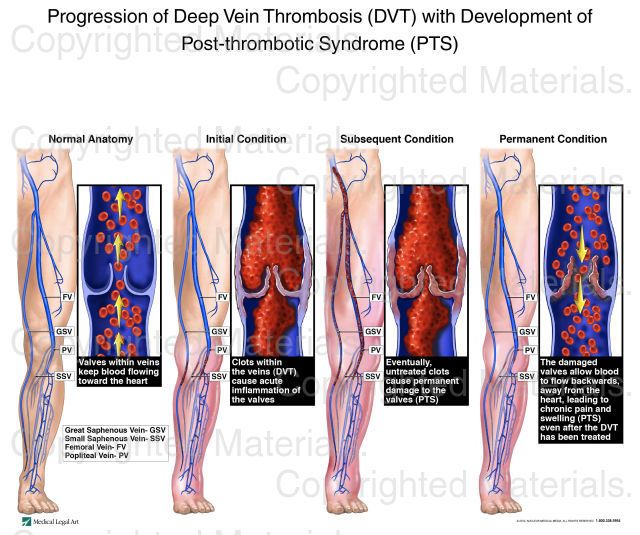
Preventing Deep Vein Thrombosis: Strategies for Risk Reduction
While not all cases of DVT can be prevented, there are several measures individuals can take to reduce their risk, especially those with known risk factors.
Lifestyle Modifications for DVT Prevention
- Stay active: Regular physical activity promotes healthy blood circulation.
- Maintain a healthy weight: Obesity increases the risk of DVT, so maintaining a healthy BMI is beneficial.
- Stay hydrated: Proper hydration helps prevent blood from thickening.
- Avoid prolonged immobility: During long trips or periods of bed rest, try to move your legs regularly.
- Quit smoking: Smoking increases the risk of blood clots and other cardiovascular problems.
- Manage underlying health conditions: Proper control of conditions like diabetes and high blood pressure can reduce DVT risk.
Preventive Measures for High-Risk Situations
In certain high-risk scenarios, such as hospitalization or long-distance travel, additional preventive measures may be recommended:
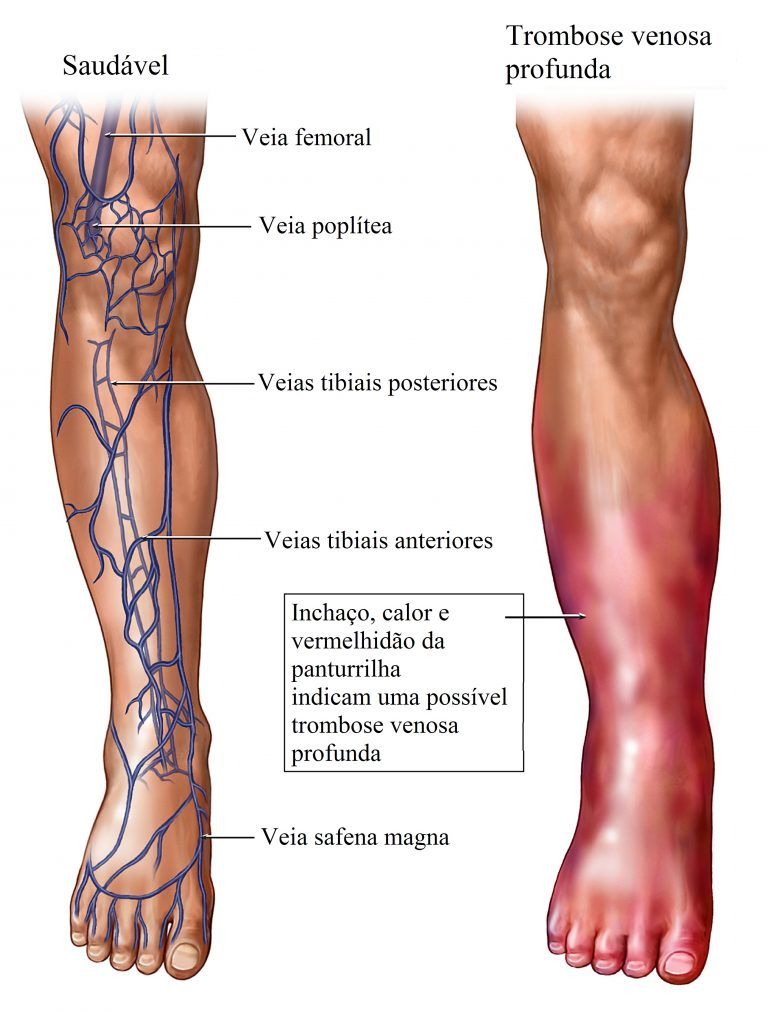
- Compression stockings: These can be particularly helpful during long flights or periods of immobility.
- Prophylactic anticoagulants: In some cases, doctors may prescribe blood thinners to prevent clots, especially before and after surgery.
- Early mobilization: Getting up and moving as soon as possible after surgery or illness can significantly reduce the risk of DVT.
- Pneumatic compression devices: These may be used in hospital settings to improve blood flow in the legs.
How effective are these preventive measures? When implemented correctly, these strategies can significantly reduce the risk of DVT. For instance, studies have shown that the use of compression stockings during long-haul flights can reduce the risk of DVT by up to 63%.
Complications of Untreated Deep Vein Thrombosis
Left untreated, DVT can lead to serious and potentially life-threatening complications. Understanding these risks underscores the importance of early detection and treatment.
Pulmonary Embolism: A Life-Threatening Complication
The most severe complication of DVT is pulmonary embolism (PE), which occurs when a blood clot breaks free and travels to the lungs, blocking a pulmonary artery. Symptoms of PE include:

- Sudden shortness of breath
- Chest pain that worsens with deep breathing or coughing
- Rapid heartbeat
- Dizziness or lightheadedness
- Coughing up blood
How urgent is the need for treatment in case of suspected PE? Pulmonary embolism is a medical emergency that requires immediate attention. If you experience symptoms of PE, seek emergency medical care immediately, as prompt treatment can be life-saving.
Post-Thrombotic Syndrome
Another potential long-term complication of DVT is post-thrombotic syndrome (PTS), which can develop months or years after the initial clot. Symptoms of PTS may include:
- Chronic swelling in the affected limb
- Persistent pain or discomfort
- Skin discoloration or ulceration
- Varicose veins
- Difficulty walking or performing daily activities
What percentage of DVT patients develop PTS? Studies suggest that approximately 20-50% of patients with DVT may develop some degree of post-thrombotic syndrome, with about 5-10% experiencing severe symptoms.
Living with Deep Vein Thrombosis: Long-Term Management and Care
For many individuals, managing DVT is an ongoing process that extends beyond the initial treatment phase. Long-term care focuses on preventing recurrence, managing symptoms, and maintaining overall vascular health.

Ongoing Monitoring and Follow-up Care
- Regular check-ups with healthcare providers
- Periodic ultrasound scans to assess vein health
- Monitoring of anticoagulant therapy, if prescribed long-term
- Vigilance for signs of post-thrombotic syndrome
Lifestyle Adjustments for Long-Term DVT Management
Individuals with a history of DVT may need to make certain lifestyle adjustments to maintain their health and reduce the risk of recurrence:
- Consistent use of compression stockings, as recommended by healthcare providers
- Regular exercise, with a focus on activities that promote leg circulation
- Maintaining a healthy diet and weight
- Avoiding prolonged periods of immobility
- Managing stress through relaxation techniques or counseling
- Adhering to prescribed medication regimens
Can individuals with a history of DVT lead normal, active lives? With proper management and care, most people with a history of DVT can indeed lead full, active lives. However, it’s crucial to follow medical advice and maintain open communication with healthcare providers.

Emotional and Psychological Impact of DVT
Living with DVT or its aftermath can have psychological effects that should not be overlooked:
- Anxiety about recurrence or complications
- Depression related to lifestyle changes or physical limitations
- Stress from ongoing medical management
- Body image concerns, particularly in cases of visible vein changes or swelling
How can patients address the emotional aspects of living with DVT? Support groups, counseling, and open discussions with healthcare providers can be valuable resources for managing the emotional challenges associated with DVT. Many patients find that connecting with others who have similar experiences can be particularly helpful.
Advances in DVT Research and Future Treatment Prospects
The field of DVT research is dynamic, with ongoing studies aimed at improving diagnosis, treatment, and prevention strategies. These advancements offer hope for better outcomes and quality of life for individuals affected by DVT.
Emerging Diagnostic Technologies
- Advanced imaging techniques for more accurate and non-invasive detection of blood clots
- Development of biomarkers for early DVT detection and risk assessment
- Artificial intelligence algorithms to enhance diagnostic accuracy and predict DVT risk
Innovative Treatment Approaches
Researchers are exploring new treatment modalities that may offer advantages over current options:
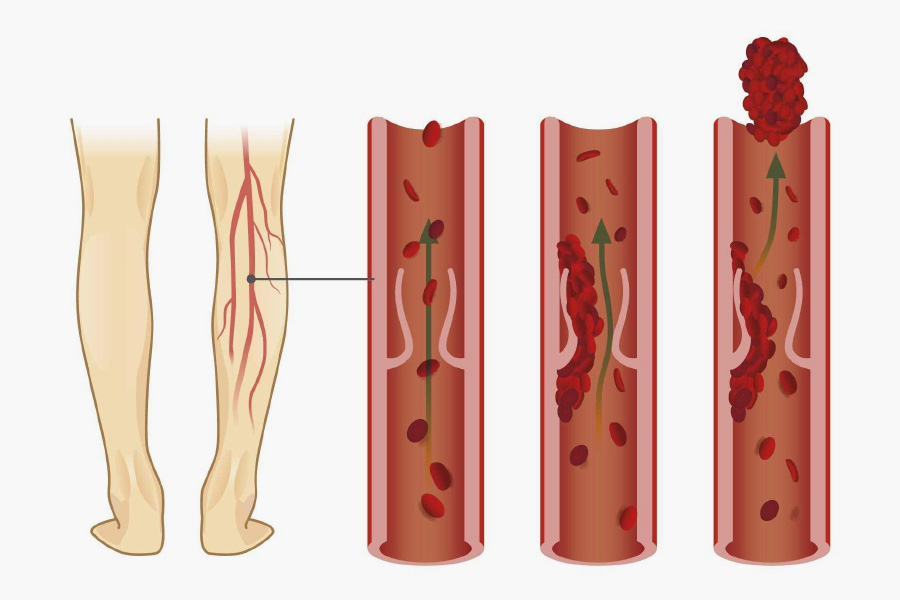
- Novel anticoagulants with improved safety profiles and easier management
- Targeted thrombolytic therapies to dissolve clots more effectively with fewer systemic effects
- Gene therapy approaches to address underlying genetic risk factors for thrombosis
- Nanotechnology-based treatments for more precise drug delivery
What potential impact could these advancements have on DVT management? These innovations could lead to earlier detection, more personalized treatment plans, and reduced risk of complications, ultimately improving outcomes for patients with DVT.
Prevention Strategies of the Future
Future prevention strategies may include:
- Personalized risk assessment tools incorporating genetic and environmental factors
- Advanced wearable devices for real-time monitoring of blood flow and early detection of clot formation
- Development of new prophylactic medications with fewer side effects
- Enhanced patient education programs utilizing virtual reality and other interactive technologies
As research in the field of DVT continues to evolve, patients and healthcare providers can look forward to more effective, personalized approaches to managing this challenging condition. Stay informed about these developments and discuss new options with your healthcare team to ensure you’re receiving the most up-to-date care for DVT prevention and treatment.

Deep Vein Thrombosis (DVT): Symptoms, Causes, and More
Deep vein thrombosis (DVT) is a serious condition in which a blood clot forms in a deep vein inside your body. A blood clot is a clump of blood that’s turned into a solid state.
Share on PinterestHand edema thrombosis. Photo by the Emergency Medicine Department, Columbia University Medical Center, New York, NY, 10032, USA.
Deep vein blood clots typically form in your thigh or lower leg, but they can also develop in other areas of your body.
Other names associated with this condition may include:
- thromboembolism
- post-thrombotic syndrome
- postphlebitic syndrome
According to the Centers for Disease Control and Prevention (CDC), symptoms of DVT only occur in about half of the people with this condition.
Common DVT symptoms include:
- swelling in your foot, ankle, or leg, usually on one side
- cramping pain in your affected leg that usually begins in your calf
- severe, unexplained pain in your foot and ankle
- an area of skin that feels warmer than the skin in the surrounding areas
- the skin over the affected area turning pale or reddish, or bluish color, depending on skin tone
People with an upper extremity DVT, or a blood clot in the arm, may not experience symptoms. If they do, common symptoms include:
If they do, common symptoms include:
- neck pain
- shoulder pain
- swelling in the arm or hand
- blue- or darker-tinted skin color
- pain that moves from the arm to the forearm
- weakness in the hand
People may not find out they have DVT until they’ve undergone emergency treatment for a pulmonary embolism (blood clot in the lung).
A pulmonary embolism can happen when a DVT clot has moved from the arm or leg into the lung. When an artery in the lung becomes blocked, it’s life threatening and requires emergency care.
DVT is caused by a blood clot. The clot blocks a vein, preventing blood from properly circulating in your body.
Different factors can lead to a DVT or increase the risk of developing it. They include:
- Injury: Damage to a blood vessel’s wall can narrow or block blood flow. A blood clot may form as a result.
- Surgery: Blood vessels can be damaged during surgery, leading to the development of a blood clot.
 Bed rest with little to no movement after surgery may also increase your risk of developing a blood clot.
Bed rest with little to no movement after surgery may also increase your risk of developing a blood clot. - Reduced mobility or inactivity: When you sit frequently, such as during a long flight, blood can collect in your legs, especially the lower parts. If you cannot move for extended periods, the blood flow in your legs can slow down. This can cause a clot to develop.
- Certain medications: Some medications increase the chances your blood will form a clot. These include birth control pills, hormone therapy drugs, glucocorticoids, and antidepressants.
- Age: DVT can still happen at any age, but the incidence rises in older ages. Only 1 in 10,000 people younger than age 20 get DVT, but among those older than age 80, it is 1 in 100.
- Trauma: Having an injury that damages your veins, like a bone fracture, can cause a blood clot to develop.
- Obesity. Being overweight can put more pressure on your legs and pelvis veins.

- Pregnancy: Pregnancy increases the risk of DVT. In fact, pregnant people are 5-10 times more likely to develop DVT than those who aren’t pregnant.
- Family history: Having relatives who have had DVT may make you more likely to get it.
- Catheter: Having a catheter placed in a vein can increase the likelihood of a blood clot forming.
- Smoking: This is associated with a higher risk of DVT.
- Hereditary blood clotting disorders: Having a clotting disorder makes you more susceptible to DVT.
- Cancer: Having pancreatic, lung, stomach, or brain cancer, as well as other cancers, puts you at risk of DVT, especially if you’re undergoing chemotherapy.
In addition, several other health conditions can increase the risk for DVT. These include
- inflammatory bowel disease
- cardiac problems like high blood pressure and heart failure
- sepsis
- Covid-19, tuberculosis, and other viral or bacterial illnesses
- asthma
- sleep apnea
- polycystic ovary syndrome (PCOS)
- diabetes
A major complication of DVT is a pulmonary embolism. You can develop a pulmonary embolism if a blood clot moves to your lungs and blocks a blood vessel.
You can develop a pulmonary embolism if a blood clot moves to your lungs and blocks a blood vessel.
This can cause serious damage to your lungs and other parts of your body. Get immediate medical help if you have signs of a pulmonary embolism. These signs include:
- dizziness
- sweating
- chest pain that gets worse with coughing or inhaling deeply
- rapid breathing
- coughing up blood
- rapid heart rate
DVT is a serious medical condition. Tell your doctor immediately if you think you’re experiencing symptoms of DVT, or go to the closest emergency room. A healthcare professional can check out your symptoms.
DVT treatments focus on keeping the clot from growing. In addition, treatment may help prevent a pulmonary embolism and lower your risk of having more clots.
Medications
Your doctor might prescribe medications to thin your blood. The preferred treatment is with direct oral anticoagulants (DOACs) such as rivaroxaban (Xarelto) or apixaban (Eliquis).
Other drugs a doctor may use include:
- heparin
- warfarin (Coumadin)
- enoxaparin (Lovenox)
- fondaparinux (Arixtra)
Blood-thinning medications make it harder for your blood to clot. They also keep existing clots as small as possible and decrease the chance that you’ll develop more clots.
If blood thinners don’t work or the DVT is severe, your doctor might use thrombolytic drugs. People with upper extremity DVT may also benefit from this medication.
Thrombolytic drugs work by breaking up clots. You’ll receive these intravenously (through a vein).
Compression stockings
If you’re at high risk of DVT, wearing compression stockings can prevent swelling and might lower your chance of developing clots.
Compression stockings reach just below your knee or right above it. Your doctor may recommend you wear these every day.
Filters
If you cannot take blood thinners, you might need a filter inside the large abdominal vein called the vena cava. This treatment helps prevent pulmonary embolisms by stopping clots from entering your lungs.
This treatment helps prevent pulmonary embolisms by stopping clots from entering your lungs.
Filters do have risks. If they’re left in for too long, they can actually increase the risk of DVT. Filters should be used for a short-term period until the risk of thromboembolism is reduced, and blood thinners can be used.
Surgery
Your doctor may suggest surgery to remove a DVT clot in your arm or leg. This is typically only recommended with very large blood clots or clots that cause serious issues, like tissue damage.
During a surgical thrombectomy or surgery to remove a blood clot, your surgeon will make an incision into a blood vessel. They’ll locate and remove the clot. Then, they’ll repair the blood vessel and tissue.
In some cases, they may use a small inflating balloon to keep the blood vessel open while they remove the clot. When the clot is found and removed, the balloon is removed with it.
Surgery isn’t without risks, so many doctors will recommend it only in severe cases. Risks include:
Risks include:
- infection
- damage to the blood vessel
- excess bleeding
Home remedies
Once a DVT blood clot is diagnosed, your doctor will likely prescribe medication to help thin the blood or break up the clot.
You can combine the prescribed medication with home remedies to prevent other complications and reduce the risk of future blood clots.
Move more
If possible, take daily walks to improve blood flow. Shorter, frequent walks are better than one long walk.
Keep your leg or arm elevated
This is especially important for the legs. Blood can pool if your feet are on the ground all day. Use a stool or chair to keep your legs elevated and close to level with your hips.
Wear compression stockings
These specially designed stockings fit tightly around your feet and become gradually looser as they move up your leg to your knee. The compression helps prevent pooling and swelling, and it increases blood flow.
Most people don’t need them, but people at high risk of DVT may find them useful. Compression stockings may be beneficial when you’re traveling.
Eat healthfully
Eating a nutrient-dense and balanced diet is important for helping to avoid life threatening complications.
A diet high in fiber, fruits, and vegetables, such as the Mediterranean diet, may be best for people at risk of DVT or those who’ve had DVT before, but research is needed to support this.
Some vitamins and minerals can interfere with DVT medications. For example, too much vitamin K can bypass warfarin’s ability to thin your blood and prevent a clot.
Review any vitamins or supplements you take with your doctor, and ask about possible medication interactions. It’s also important you talk with your doctor about any foods or nutrients you should avoid.
A healthy lifestyle incorporates many necessary changes to prevent blood clots from forming. This includes moving more, quitting smoking, and maintaining a moderate weight.
You can also lower your risk of having DVT by:
- managing your blood pressure
- giving up smoking
- maintaining a moderate weight
Take any blood thinners your doctor prescribes if you’re having surgery, which can lower your chance of developing clots afterward.
The risk of developing DVT during travel becomes higher if you sit for more than 4 hours. Moving your legs around when you’ve been sitting for a while also helps keep your blood flowing. Walking around after being on bed rest can prevent clots from forming.
Get out of your car during long drives and stretch at regular intervals. Walk in the aisles if you’re flying, taking a train, or riding a bus.
Stretch your legs and feet while you’re sitting. This keeps your blood moving steadily in your calves. Don’t wear tight clothes that can restrict blood flow. Complications of DVT are preventable.
Exercises for DVT
If you have to be seated for long periods, such as on a long flight, you can exercise to keep your legs moving and help circulate blood.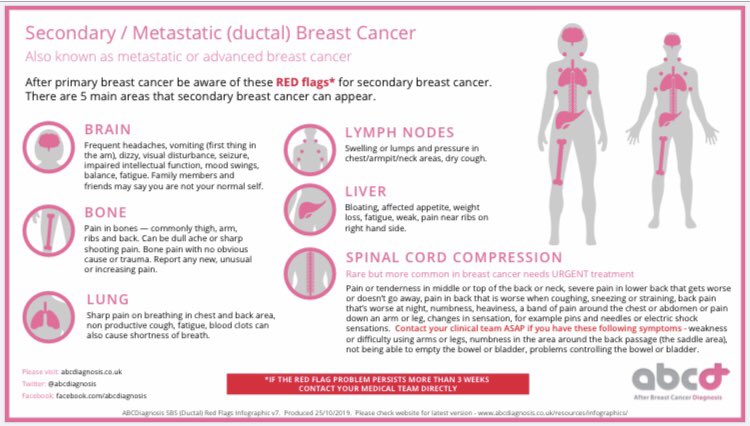
Knee pulls
Bend your leg, and raise your knee toward your chest. Wrap your knee with your arms for a greater stretch. Hold this position for several seconds, then do the same exercise on the other side.
Repeat these stretches several times.
Share on PinterestGifs by Active Body. Creative Mind.
Foot pumps
Place your feet flat on the floor. Keeping the balls of your feet on the floor, raise your heels. Hold for a few seconds, then lower your heels.
Raise the balls of your feet off the floor, keeping your heels in place. Hold for a few seconds, then lower the balls of your feet.
Repeat these pumps several times.
Share on PinterestGifs by Active Body. Creative Mind.
Ankle circles
Lift both feet off the floor. Draw circles with your toes in one direction for a few seconds. Switch directions, and draw circles for a few seconds.
Repeat this exercise several times.
Share on Pinterest
Your doctor will use your medical history, a thorough physical exam, and one or more diagnostic tests to find or rule out DVT. These tests include:
These tests include:
Ultrasound
This is the most commonly used test for diagnosing DVT. Ultrasound uses sound waves to create a picture of your arteries and veins to see how blood flows through them.
If a clot is present, your doctor can see the interrupted blood flow and make the diagnosis.
Venogram
If the ultrasound is inconclusive, your doctor may order a venogram. During this test, a dye is injected into the vein in question. Then, an X-ray is taken over the area where your doctor suspects DVT is present.
The dye makes the vein more visible so that interrupted blood flow would be easily seen.
D-dimer test
A D-dimer blood test measures the presence of a substance released when a blood clot breaks apart.
If levels of the substance are high and you have risk factors for DVT, you likely have a clot. If levels are healthy and your risk factors are low, you likely don’t.
A D-dimer blood test can also indicate other factors, such as a pulmonary embolism, stroke, pregnancy, or infection, so your doctor may need to use other tests to be sure of a diagnosis.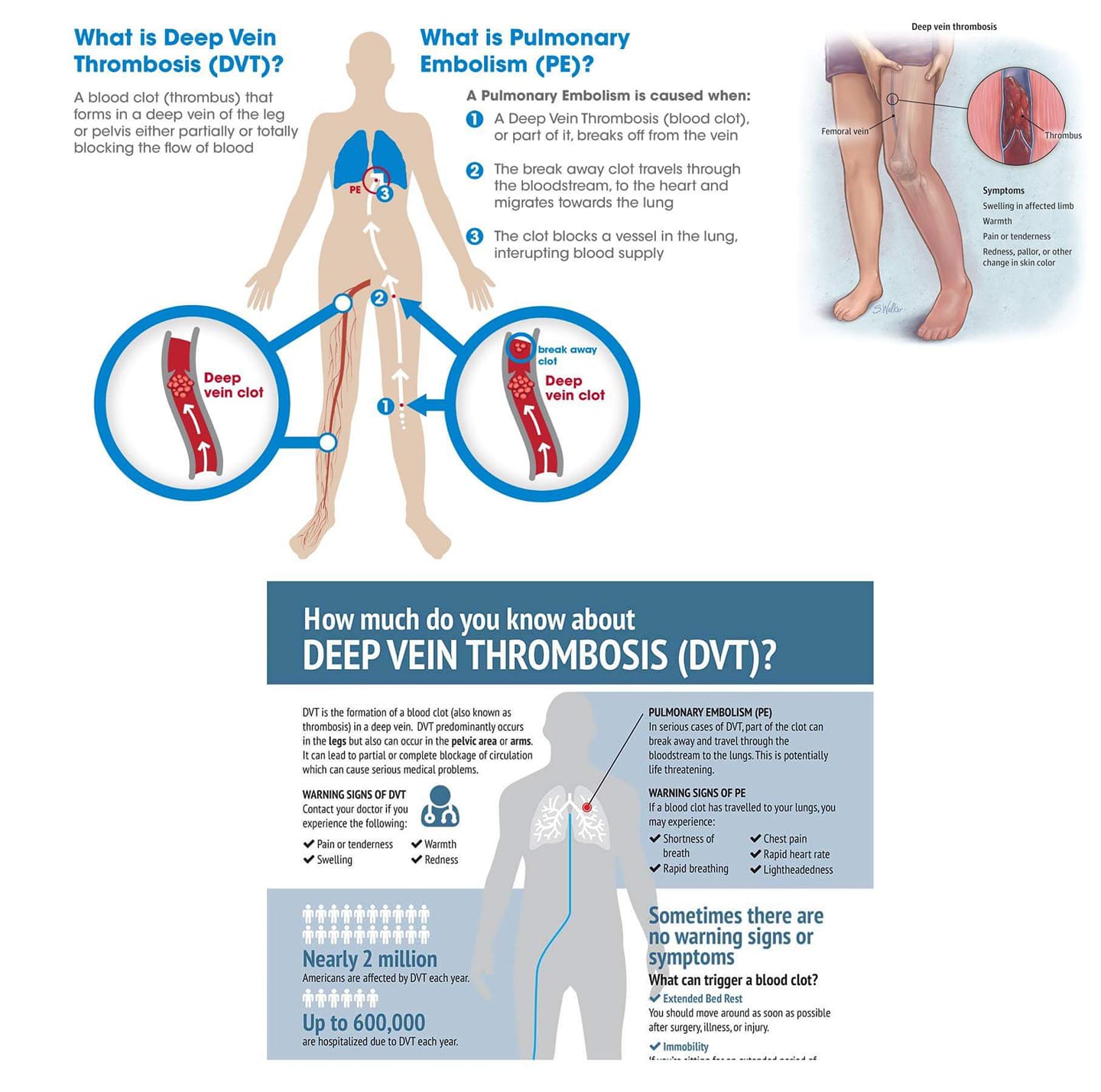
Other tests can be used to diagnose DVT if these are not successful.
DVT is a serious condition that could be life threatening. Diagnosis can often be difficult, as many people with DVT do not experience symptoms.
If you don’t experience symptoms, you may even be at a greater risk for life threatening complications.
This is why it’s important to know the risk factors and share any symptoms with your doctor. They may prescribe medication or other therapies to help you treat DVT, but there are many things you can do on your own.
Moving regularly, wearing compression stockings, and adopting a balanced diet are key ways to manage DVT risk.
Deep Vein Thrombosis (DVT): Symptoms, Causes, and More
Deep vein thrombosis (DVT) is a serious condition in which a blood clot forms in a deep vein inside your body. A blood clot is a clump of blood that’s turned into a solid state.
Share on PinterestHand edema thrombosis. Photo by the Emergency Medicine Department, Columbia University Medical Center, New York, NY, 10032, USA.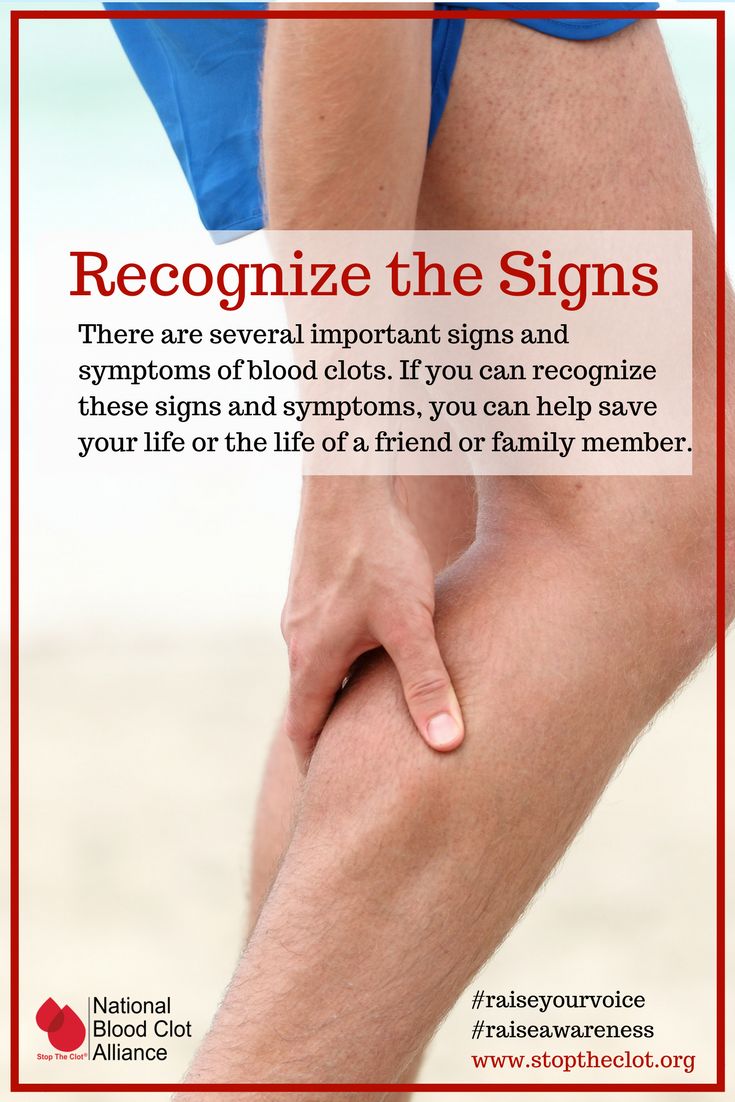
Deep vein blood clots typically form in your thigh or lower leg, but they can also develop in other areas of your body.
Other names associated with this condition may include:
- thromboembolism
- post-thrombotic syndrome
- postphlebitic syndrome
According to the Centers for Disease Control and Prevention (CDC), symptoms of DVT only occur in about half of the people with this condition.
Common DVT symptoms include:
- swelling in your foot, ankle, or leg, usually on one side
- cramping pain in your affected leg that usually begins in your calf
- severe, unexplained pain in your foot and ankle
- an area of skin that feels warmer than the skin in the surrounding areas
- the skin over the affected area turning pale or reddish, or bluish color, depending on skin tone
People with an upper extremity DVT, or a blood clot in the arm, may not experience symptoms. If they do, common symptoms include:
- neck pain
- shoulder pain
- swelling in the arm or hand
- blue- or darker-tinted skin color
- pain that moves from the arm to the forearm
- weakness in the hand
People may not find out they have DVT until they’ve undergone emergency treatment for a pulmonary embolism (blood clot in the lung).
A pulmonary embolism can happen when a DVT clot has moved from the arm or leg into the lung. When an artery in the lung becomes blocked, it’s life threatening and requires emergency care.
DVT is caused by a blood clot. The clot blocks a vein, preventing blood from properly circulating in your body.
Different factors can lead to a DVT or increase the risk of developing it. They include:
- Injury: Damage to a blood vessel’s wall can narrow or block blood flow. A blood clot may form as a result.
- Surgery: Blood vessels can be damaged during surgery, leading to the development of a blood clot. Bed rest with little to no movement after surgery may also increase your risk of developing a blood clot.
- Reduced mobility or inactivity: When you sit frequently, such as during a long flight, blood can collect in your legs, especially the lower parts. If you cannot move for extended periods, the blood flow in your legs can slow down.
 This can cause a clot to develop.
This can cause a clot to develop. - Certain medications: Some medications increase the chances your blood will form a clot. These include birth control pills, hormone therapy drugs, glucocorticoids, and antidepressants.
- Age: DVT can still happen at any age, but the incidence rises in older ages. Only 1 in 10,000 people younger than age 20 get DVT, but among those older than age 80, it is 1 in 100.
- Trauma: Having an injury that damages your veins, like a bone fracture, can cause a blood clot to develop.
- Obesity. Being overweight can put more pressure on your legs and pelvis veins.
- Pregnancy: Pregnancy increases the risk of DVT. In fact, pregnant people are 5-10 times more likely to develop DVT than those who aren’t pregnant.
- Family history: Having relatives who have had DVT may make you more likely to get it.
- Catheter: Having a catheter placed in a vein can increase the likelihood of a blood clot forming.

- Smoking: This is associated with a higher risk of DVT.
- Hereditary blood clotting disorders: Having a clotting disorder makes you more susceptible to DVT.
- Cancer: Having pancreatic, lung, stomach, or brain cancer, as well as other cancers, puts you at risk of DVT, especially if you’re undergoing chemotherapy.
In addition, several other health conditions can increase the risk for DVT. These include
- inflammatory bowel disease
- cardiac problems like high blood pressure and heart failure
- sepsis
- Covid-19, tuberculosis, and other viral or bacterial illnesses
- asthma
- sleep apnea
- polycystic ovary syndrome (PCOS)
- diabetes
A major complication of DVT is a pulmonary embolism. You can develop a pulmonary embolism if a blood clot moves to your lungs and blocks a blood vessel.
This can cause serious damage to your lungs and other parts of your body. Get immediate medical help if you have signs of a pulmonary embolism. These signs include:
Get immediate medical help if you have signs of a pulmonary embolism. These signs include:
- dizziness
- sweating
- chest pain that gets worse with coughing or inhaling deeply
- rapid breathing
- coughing up blood
- rapid heart rate
DVT is a serious medical condition. Tell your doctor immediately if you think you’re experiencing symptoms of DVT, or go to the closest emergency room. A healthcare professional can check out your symptoms.
DVT treatments focus on keeping the clot from growing. In addition, treatment may help prevent a pulmonary embolism and lower your risk of having more clots.
Medications
Your doctor might prescribe medications to thin your blood. The preferred treatment is with direct oral anticoagulants (DOACs) such as rivaroxaban (Xarelto) or apixaban (Eliquis).
Other drugs a doctor may use include:
- heparin
- warfarin (Coumadin)
- enoxaparin (Lovenox)
- fondaparinux (Arixtra)
Blood-thinning medications make it harder for your blood to clot. They also keep existing clots as small as possible and decrease the chance that you’ll develop more clots.
They also keep existing clots as small as possible and decrease the chance that you’ll develop more clots.
If blood thinners don’t work or the DVT is severe, your doctor might use thrombolytic drugs. People with upper extremity DVT may also benefit from this medication.
Thrombolytic drugs work by breaking up clots. You’ll receive these intravenously (through a vein).
Compression stockings
If you’re at high risk of DVT, wearing compression stockings can prevent swelling and might lower your chance of developing clots.
Compression stockings reach just below your knee or right above it. Your doctor may recommend you wear these every day.
Filters
If you cannot take blood thinners, you might need a filter inside the large abdominal vein called the vena cava. This treatment helps prevent pulmonary embolisms by stopping clots from entering your lungs.
Filters do have risks. If they’re left in for too long, they can actually increase the risk of DVT./2549387-article-causes-of-calf-pain-5a70fb720e23d90036a5fa54.png) Filters should be used for a short-term period until the risk of thromboembolism is reduced, and blood thinners can be used.
Filters should be used for a short-term period until the risk of thromboembolism is reduced, and blood thinners can be used.
Surgery
Your doctor may suggest surgery to remove a DVT clot in your arm or leg. This is typically only recommended with very large blood clots or clots that cause serious issues, like tissue damage.
During a surgical thrombectomy or surgery to remove a blood clot, your surgeon will make an incision into a blood vessel. They’ll locate and remove the clot. Then, they’ll repair the blood vessel and tissue.
In some cases, they may use a small inflating balloon to keep the blood vessel open while they remove the clot. When the clot is found and removed, the balloon is removed with it.
Surgery isn’t without risks, so many doctors will recommend it only in severe cases. Risks include:
- infection
- damage to the blood vessel
- excess bleeding
Home remedies
Once a DVT blood clot is diagnosed, your doctor will likely prescribe medication to help thin the blood or break up the clot.
You can combine the prescribed medication with home remedies to prevent other complications and reduce the risk of future blood clots.
Move more
If possible, take daily walks to improve blood flow. Shorter, frequent walks are better than one long walk.
Keep your leg or arm elevated
This is especially important for the legs. Blood can pool if your feet are on the ground all day. Use a stool or chair to keep your legs elevated and close to level with your hips.
Wear compression stockings
These specially designed stockings fit tightly around your feet and become gradually looser as they move up your leg to your knee. The compression helps prevent pooling and swelling, and it increases blood flow.
Most people don’t need them, but people at high risk of DVT may find them useful. Compression stockings may be beneficial when you’re traveling.
Eat healthfully
Eating a nutrient-dense and balanced diet is important for helping to avoid life threatening complications.
A diet high in fiber, fruits, and vegetables, such as the Mediterranean diet, may be best for people at risk of DVT or those who’ve had DVT before, but research is needed to support this.
Some vitamins and minerals can interfere with DVT medications. For example, too much vitamin K can bypass warfarin’s ability to thin your blood and prevent a clot.
Review any vitamins or supplements you take with your doctor, and ask about possible medication interactions. It’s also important you talk with your doctor about any foods or nutrients you should avoid.
A healthy lifestyle incorporates many necessary changes to prevent blood clots from forming. This includes moving more, quitting smoking, and maintaining a moderate weight.
You can also lower your risk of having DVT by:
- managing your blood pressure
- giving up smoking
- maintaining a moderate weight
Take any blood thinners your doctor prescribes if you’re having surgery, which can lower your chance of developing clots afterward.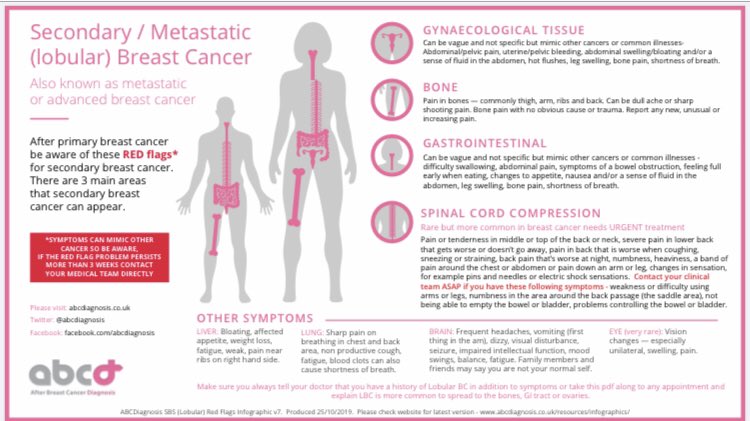
The risk of developing DVT during travel becomes higher if you sit for more than 4 hours. Moving your legs around when you’ve been sitting for a while also helps keep your blood flowing. Walking around after being on bed rest can prevent clots from forming.
Get out of your car during long drives and stretch at regular intervals. Walk in the aisles if you’re flying, taking a train, or riding a bus.
Stretch your legs and feet while you’re sitting. This keeps your blood moving steadily in your calves. Don’t wear tight clothes that can restrict blood flow. Complications of DVT are preventable.
Exercises for DVT
If you have to be seated for long periods, such as on a long flight, you can exercise to keep your legs moving and help circulate blood.
Knee pulls
Bend your leg, and raise your knee toward your chest. Wrap your knee with your arms for a greater stretch. Hold this position for several seconds, then do the same exercise on the other side.
Repeat these stretches several times.
Share on PinterestGifs by Active Body. Creative Mind.
Foot pumps
Place your feet flat on the floor. Keeping the balls of your feet on the floor, raise your heels. Hold for a few seconds, then lower your heels.
Raise the balls of your feet off the floor, keeping your heels in place. Hold for a few seconds, then lower the balls of your feet.
Repeat these pumps several times.
Share on PinterestGifs by Active Body. Creative Mind.
Ankle circles
Lift both feet off the floor. Draw circles with your toes in one direction for a few seconds. Switch directions, and draw circles for a few seconds.
Repeat this exercise several times.
Share on Pinterest
Your doctor will use your medical history, a thorough physical exam, and one or more diagnostic tests to find or rule out DVT. These tests include:
Ultrasound
This is the most commonly used test for diagnosing DVT. Ultrasound uses sound waves to create a picture of your arteries and veins to see how blood flows through them.
If a clot is present, your doctor can see the interrupted blood flow and make the diagnosis.
Venogram
If the ultrasound is inconclusive, your doctor may order a venogram. During this test, a dye is injected into the vein in question. Then, an X-ray is taken over the area where your doctor suspects DVT is present.
The dye makes the vein more visible so that interrupted blood flow would be easily seen.
D-dimer test
A D-dimer blood test measures the presence of a substance released when a blood clot breaks apart.
If levels of the substance are high and you have risk factors for DVT, you likely have a clot. If levels are healthy and your risk factors are low, you likely don’t.
A D-dimer blood test can also indicate other factors, such as a pulmonary embolism, stroke, pregnancy, or infection, so your doctor may need to use other tests to be sure of a diagnosis.
Other tests can be used to diagnose DVT if these are not successful.
DVT is a serious condition that could be life threatening. Diagnosis can often be difficult, as many people with DVT do not experience symptoms.
Diagnosis can often be difficult, as many people with DVT do not experience symptoms.
If you don’t experience symptoms, you may even be at a greater risk for life threatening complications.
This is why it’s important to know the risk factors and share any symptoms with your doctor. They may prescribe medication or other therapies to help you treat DVT, but there are many things you can do on your own.
Moving regularly, wearing compression stockings, and adopting a balanced diet are key ways to manage DVT risk.
causes of formation and main symptoms
Thrombosis scares everyone, and rightly so. Venous thrombosis is dangerous when a thrombus breaks off, migrates through the veins to the heart, passes through the heart and embolism – blockage of the pulmonary artery. This is a dangerous condition that can not only lead to serious complications, but also to death.
Thrombosis is the formation of a thrombus, that is, a blood clot, on the vessel wall.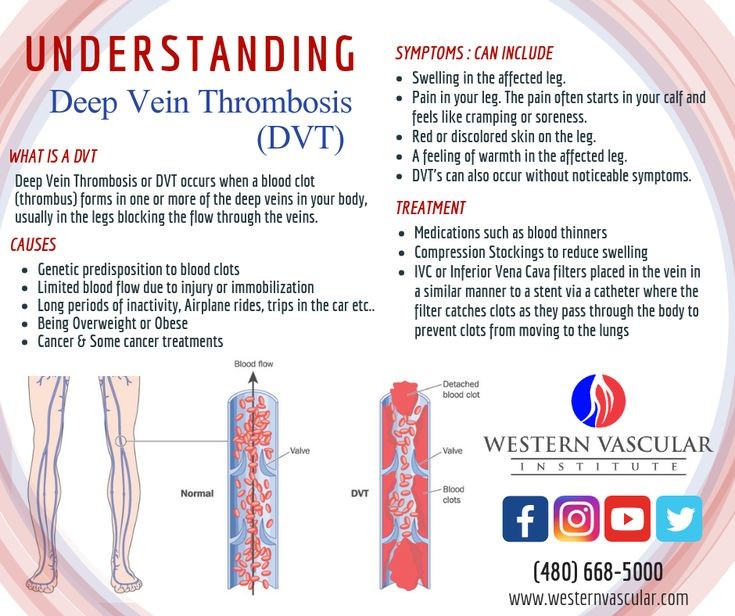 Such blood clots can either completely block the vein or partially.
Such blood clots can either completely block the vein or partially.
It is deep vein thrombosis that poses the greatest danger, as it can lead to thromboembolism. While thrombosis of the veins of the upper extremities almost never leads to thromboembolism.
For the formation of a blood clot in a vein, several conditions are necessary, sometimes even one is enough. In medicine, there is a Virchow triad, which describes the main causes of blood clots in a vein.
1. Deceleration of blood flow. A good example is a long flight, when a person sits motionless for a long time with bent legs. This situation leads to stagnation of blood, which contributes to thrombosis in deep veins. That is why it is important to wear compression stockings during air travel, which will just prevent blood from stagnating and forming a blood clot.
3. Violation of the properties of blood. This includes increased blood clotting, that is, its thickening. This change in blood can be caused by dehydration, so drinking enough water is very important.
For the formation of blood clots, one or all three factors may be sufficient. For example, consider a situation where all three factors are involved. Broken leg.
Therefore, with fractures of the lower extremities, the risk of thrombosis increases significantly. However, there are situations when blood clots form for no apparent reason.
Thrombosis can be localized in different veins. Saphenous vein thrombosis is characterized by symptoms that can be diagnosed visually – this is skin redness, inflammation and induration, most often in those vessels that are prone to varicose veins. Deep vein thrombosis requires a serious diagnosis, as it can be asymptomatic. However, he poses a threat.
But still, deep vein thrombosis has three characteristic symptoms, the presence of which allows almost 90% confidence to talk about the fact of thrombosis.
The main symptom of deep vein thrombosis is swelling. They can be expressed to varying degrees, depending on which vein the thrombus is in – in a large or in a small one.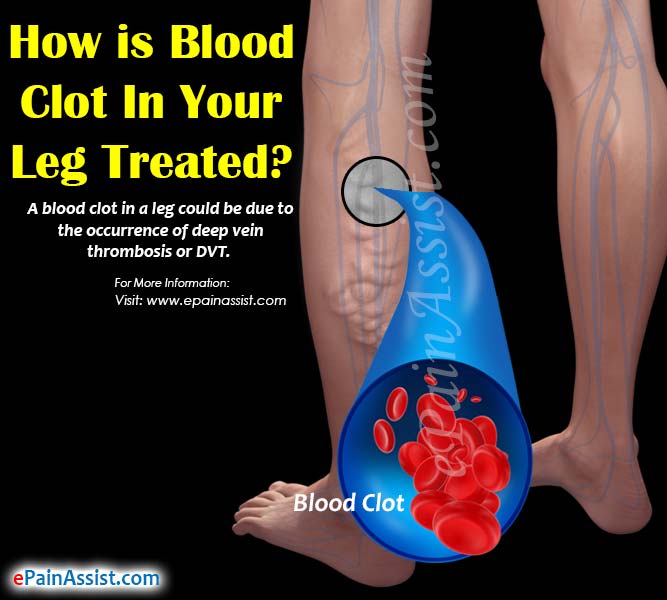 Most often, edema in thrombosis is asymmetric – it rarely occurs on two legs at once. Usually it is localized only on one limb. If your legs have been swollen for 3 years, then it is unlikely that a fresh blood clot can be suspected during the diagnosis. With thrombosis, swelling is usually sudden and acute, accompanied by pain.
Most often, edema in thrombosis is asymmetric – it rarely occurs on two legs at once. Usually it is localized only on one limb. If your legs have been swollen for 3 years, then it is unlikely that a fresh blood clot can be suspected during the diagnosis. With thrombosis, swelling is usually sudden and acute, accompanied by pain.
Why does swelling of the leg appear with thrombosis? This is due to the fact that fluid seeps through the wall of the vein. The fluid should move towards the heart, but because of the thrombus it cannot rise, therefore it looks for a way out through the vessels, getting into the subcutaneous fat and, accordingly, giving edema.
As a rule, edema is localized in the lower third of the lower leg, but if blood clots form at the level of the femoral vein, the entire leg will swell.
The second sign of a deep vein thrombus is pain. Most often, pain occurs in the lower leg and in the popliteal region, depending on which vein is thrombosed.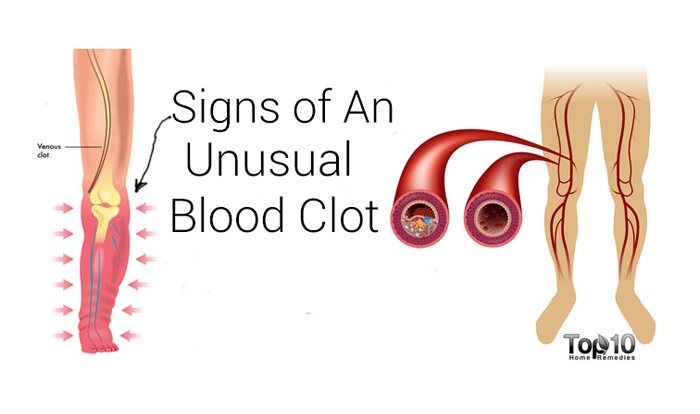 Pain in the thigh area almost never bothers patients, even though a blood clot can also be in the femoral vein.
Pain in the thigh area almost never bothers patients, even though a blood clot can also be in the femoral vein.
Pain, like swelling, is sudden and sharp. It can be described as bursting or pulling. It occurs for no apparent reason, that is, not due to injury or sprain. Sometimes a person may even limp while walking, as the pain of a blood clot increases during movement.
The change in skin tone is due to the fact that the blood in the vein cannot flow into the heart area, as it should, but seeps through the walls of the vessel, enters the subcutaneous fat, causing edema, and the edema already provokes a change in skin color.
For the diagnosis of thrombosis, there are additional symptoms that are named after those specialists who discovered these symptoms.
This symptom was first described by the American surgeon Homans, after whom it is named.
The patient needs to take a sitting or lying position and stretch the legs. Then, with an effort, pull the feet towards you. With such a movement, in the case of a blood clot, pain occurs on the back surface of the lower leg of the affected leg.
With such a movement, in the case of a blood clot, pain occurs on the back surface of the lower leg of the affected leg.
To determine the presence of a blood clot, you will need a cuff from a tonometer. It must be worn on the lower third of the leg or above. When creating pressure from 60 to 150 mm Hg. Art. in the presence of thrombosis, palpable pain appears.
It is necessary to squeeze the lower leg in the transverse direction of the calf muscle. There will be no pain with such compression. But with compression in the anteroposterior direction, in the presence of a blood clot, pain occurs.
Not all of the symptoms described are 100% likely to indicate thrombosis, but they allow you to suspect it and begin further examination. Ultrasound can reliably determine thrombosis.
If you have found these symptoms in yourself, then you need to consult a doctor – a vascular surgeon or phlebologist.
Thrombosis in the veins of the lower extremities requires treatment in a hospital. This should be done by an experienced professional. Attempts to self-treat thrombosis are very dangerous, because this way you can lose time, which will eventually lead to pulmonary embolism.
This should be done by an experienced professional. Attempts to self-treat thrombosis are very dangerous, because this way you can lose time, which will eventually lead to pulmonary embolism.
Thromboembolism is insidious in that there are no its forerunners. Against the background of good health, slight pain, slight swelling of the leg, a blood clot suddenly breaks off, the person falls and dies. Therefore, at the slightest suspicion of thrombosis, you should immediately consult a doctor.
Complications in the form of thrombosis can have serious consequences for human health, as well as threaten his life. That is why it is very important to pay attention to the prevention of thrombosis.
Cold reception: doctors told about the connection between cold feet and thrombosis | Articles
Russian doctors spoke about the first signs of a blood clot in the vessels and factors that increase the risk of disease . A feeling of cold and numbness of the extremities, whitening of the skin may indicate the formation of a blood clot.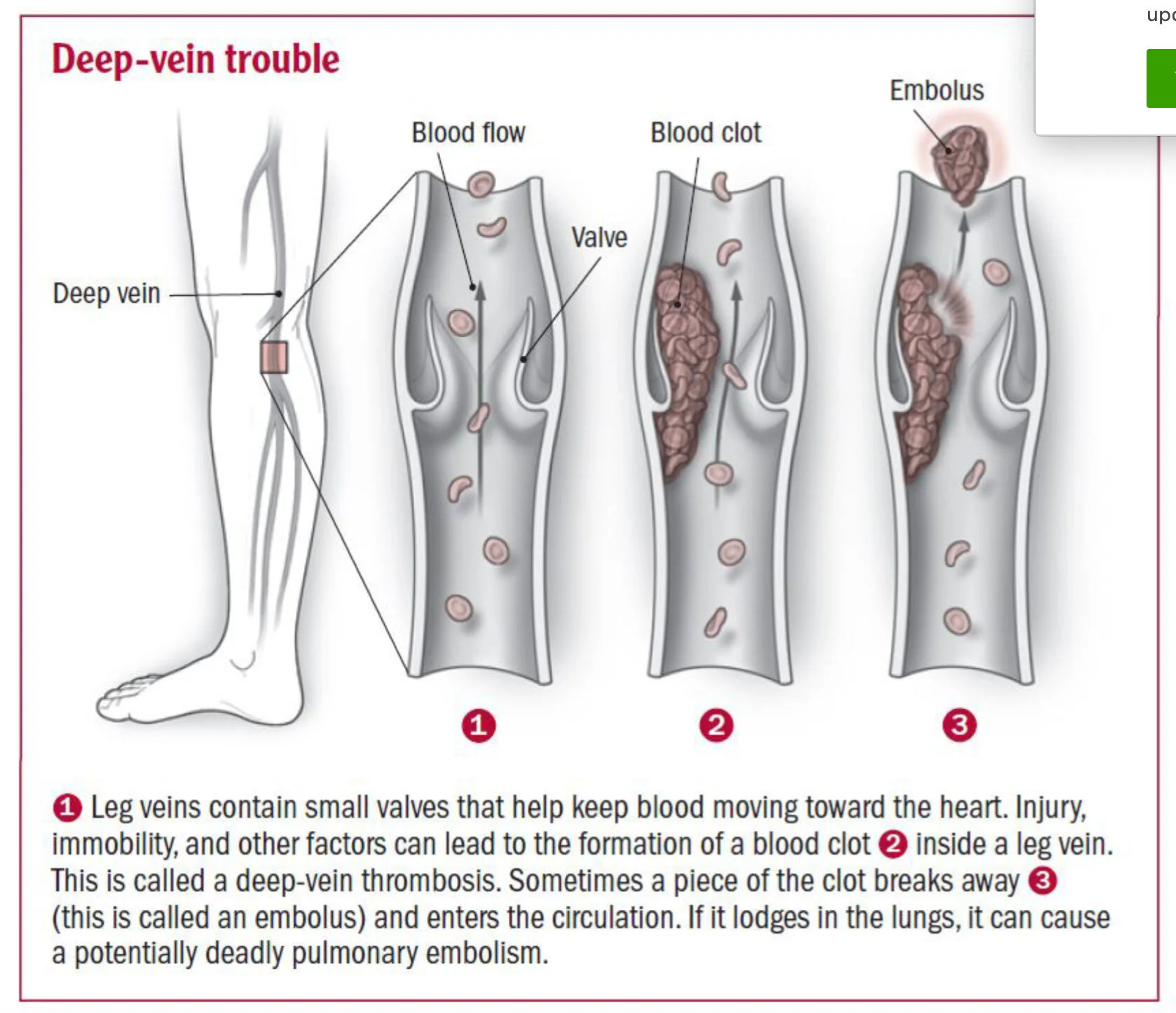 Excessive warming in moderately cold weather can provoke the onset of the disease. Details – in the material “Izvestia”.
Excessive warming in moderately cold weather can provoke the onset of the disease. Details – in the material “Izvestia”.
What is the danger of thrombosis
Thrombosis, or thromboembolism, is a dangerous condition in which a blood clot clogs a blood vessel. Doctors distinguish between two main types of thromboembolism – venous and arterial. Arterial can cause conditions such as a cerebral stroke (with blockage of the arteries of the brain) and myocardial infarction (a blood clot in the arteries that feed the heart muscle). However, venous thromboembolism is considered to be more common, with some estimates affecting up to 70% of all people.
Only one type of venous thrombosis, sudden pulmonary embolism, in Russia annually kills up to 100 thousand people. In total, thrombosis claims more lives than cancer. The World Health Organization (WHO) lists the most common types of venous thromboembolism as deep vein thrombosis (DVT) and pulmonary embolism.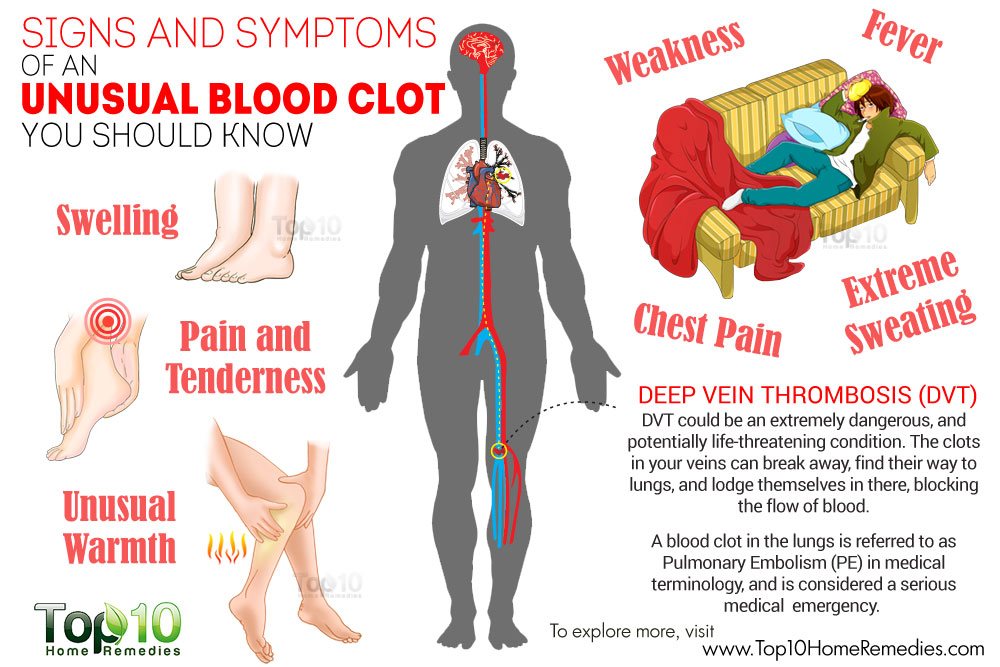
Photo: Depositphotos/Tharakorn
As the WHO explains, in DVT, a blood clot called a thrombus forms in a deep vein, usually in the lower leg. Pain and swelling of the tissues are usually felt at the site of the lesion. A detached blood clot travels through the body to the lungs, where it gets stuck and blocks the blood flow. This condition is known as a pulmonary embolism, the symptoms of which include chest pain and difficulty breathing. Without treatment, this disease can lead to death, doctors of the international organization emphasize.
Is it possible to detect thrombosis on your own
Doctors warn that thrombosis is insidious: pain does not always appear until the moment when medical intervention can help. At the first symptoms of a blood clot, it is necessary to consult a doctor, doctors emphasize. What are these symptoms?
“On the leg, for example, it looks like an inflamed hard bump. If the vein is near the surface and is large enough, it can feel like a long thin sausage, and the skin on top of it can be very red, ”Professor Mark Whiteley, head of The Whiteley Clinic in London, explained in an interview with British journalists.
However, it is best not to bring the matter to visual and painful manifestations, Russian doctors emphasize. It is necessary to be vigilant about the state of your body, this will allow you to identify thrombosis at an early stage and minimize possible damage.
Photo: Depositphotos/motortion
« A blood clot cannot but declare itself: pain, numbness and coldness of the extremities, whitening of the skin. It is important not to neglect these symptoms and not bring them to the point where the motor function of the limb is impaired, but call an ambulance. Even if it just seems to a person that “something is not right”, if the situation is not entirely clear, it is better to play it safe and consult a doctor y,” said Doctor of Medical Sciences, Head of the Department of Vascular Surgery at the N.N. A.V. Vishnevsky Ministry of Health of Russia Andrey Chupin.
The doctor explained that the diagnosis of thrombosis is extremely complicated because similar symptoms may indicate other diseases, such as radicular syndrome.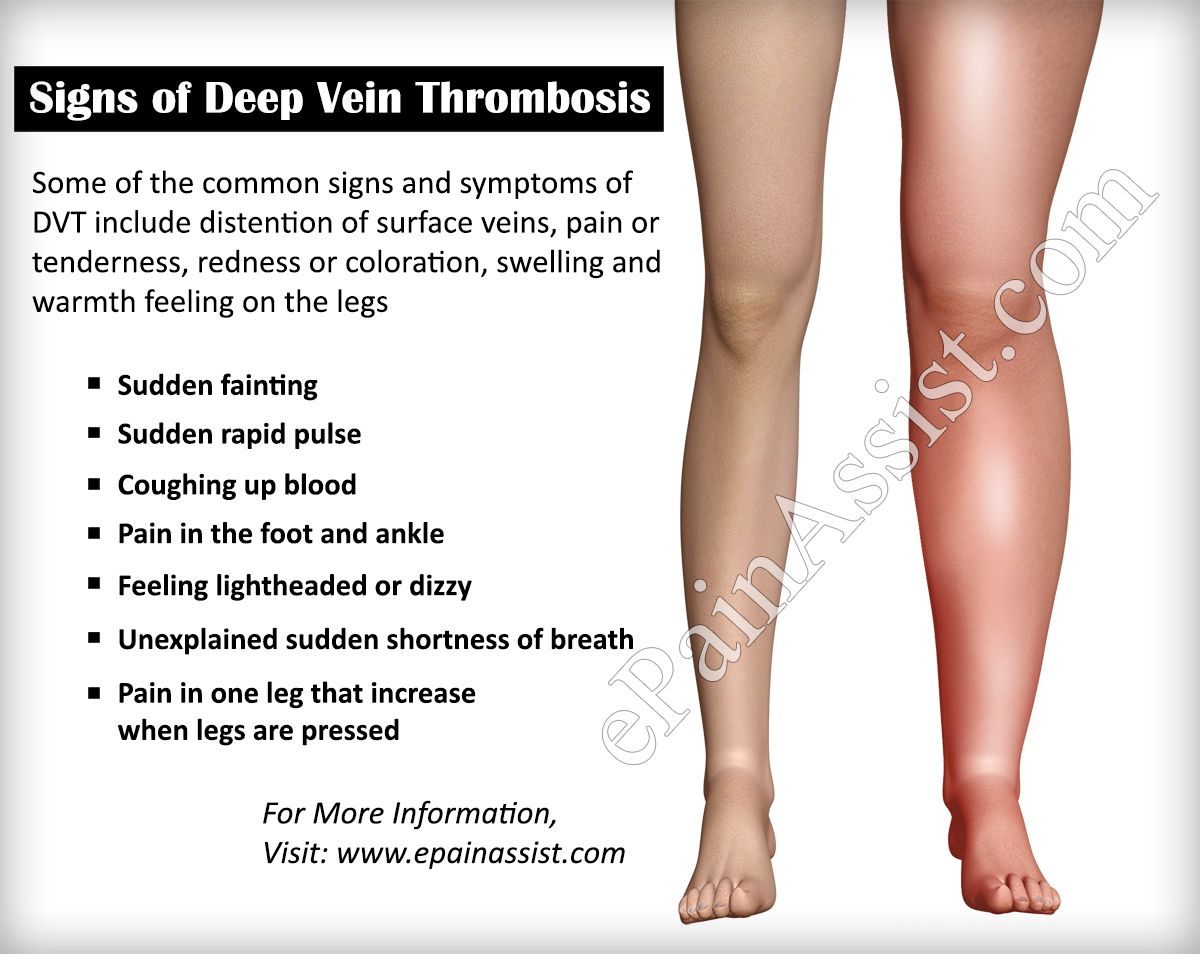 In any case, as Chupin emphasized, at the slightest suspicion of a blood clot, in no case should you self-medicate – you should consult a doctor as soon as possible. After the examination, either therapeutic treatment or surgical intervention can be prescribed.
In any case, as Chupin emphasized, at the slightest suspicion of a blood clot, in no case should you self-medicate – you should consult a doctor as soon as possible. After the examination, either therapeutic treatment or surgical intervention can be prescribed.
What increases the risk of thrombosis
WHO experts have repeatedly pointed out that a sedentary lifestyle, as well as frequent long-term air travel (when a person does not get up from a chair for a long time) significantly increases the risk of blood clots in the lower extremities. At present, the risk of thrombosis as a complication after a coronavirus infection has been added to this. Doctors emphasize that the thrombosis of the arteries of the upper and lower extremities that develops in these cases can lead to the need for their amputation.
“Covid itself gives serious complications to the cardiovascular system, primarily to the blood coagulation system, so thrombosis in those who have had this infection, unfortunately, is very common,” Andrey Chupin explained. The specialist stressed that the time of development of “coronavirus” thrombosis has not yet been determined by doctors. A dangerous illness can manifest itself both during a coronavirus infection and several months later.
The specialist stressed that the time of development of “coronavirus” thrombosis has not yet been determined by doctors. A dangerous illness can manifest itself both during a coronavirus infection and several months later.
In this regard, it is worth recalling that a large-scale vaccination campaign continues in Russia. Citizens can get vaccinated for free. Six coronavirus drugs have been registered in the country: Sputnik V, Sputnik Light, EpiVacCorona, KoviVac, EpiVacCorona N, and the Sputnik M vaccine for adolescents.
Photo: TASS/URA.RU/Alexander Mamaev
What other conditions can cause thrombosis? This question was answered by a cardiovascular surgeon, cardiologist Vladimir Khoroshev. The doctor stressed that any injury to the limbs carries a serious risk of blood clots. In addition, he drew attention to the fact that excessive warming in moderately cold weather can also lead to the formation of blood clots in the vessels.
“If the temperature is three or four degrees of heat or frost, and a person is wrapped in nineteen scarves and dressed in three sweaters, he also provokes the formation of thrombosis.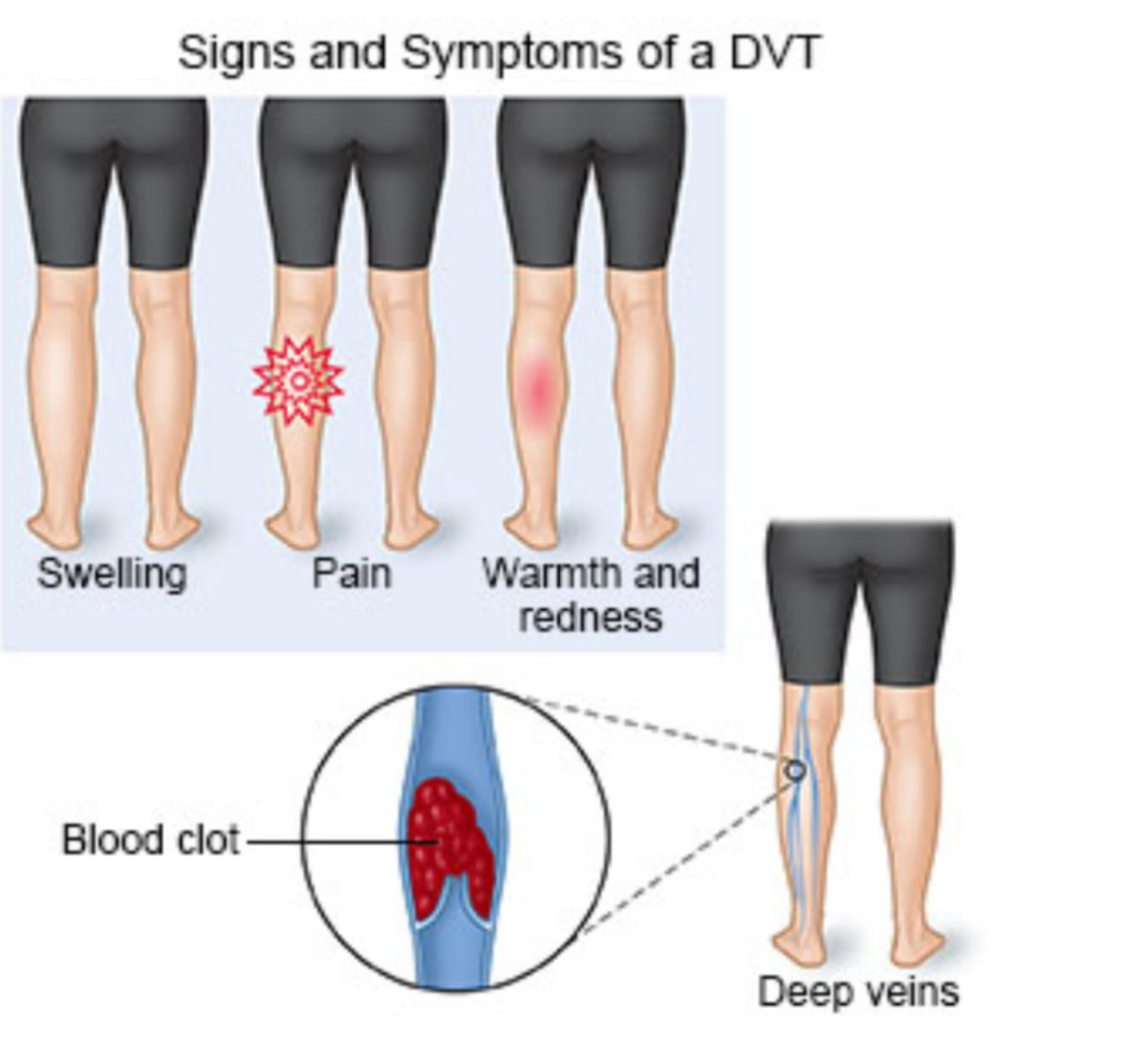

 Bed rest with little to no movement after surgery may also increase your risk of developing a blood clot.
Bed rest with little to no movement after surgery may also increase your risk of developing a blood clot.
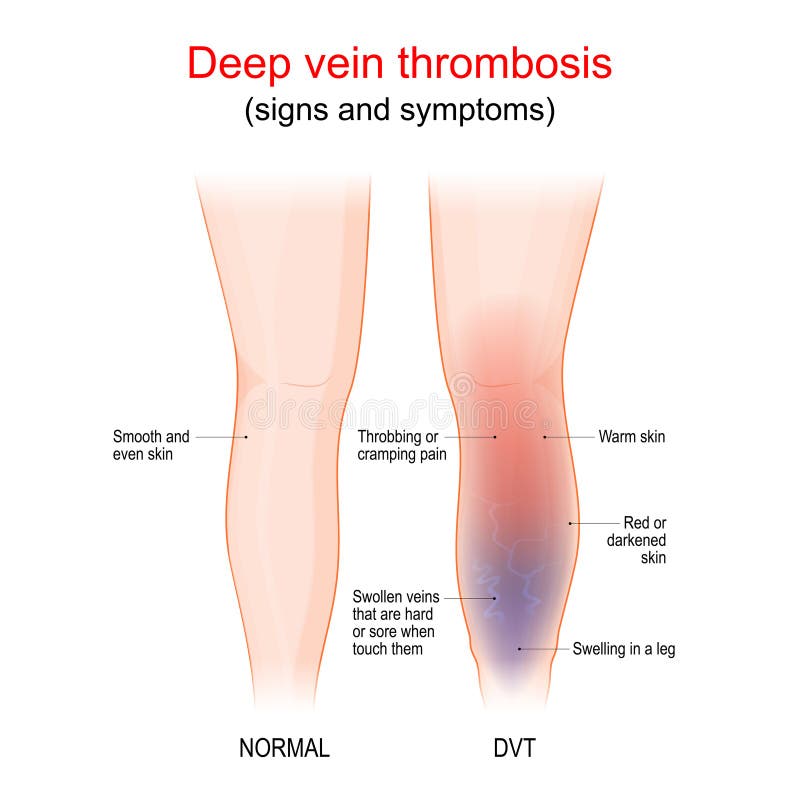 This can cause a clot to develop.
This can cause a clot to develop.